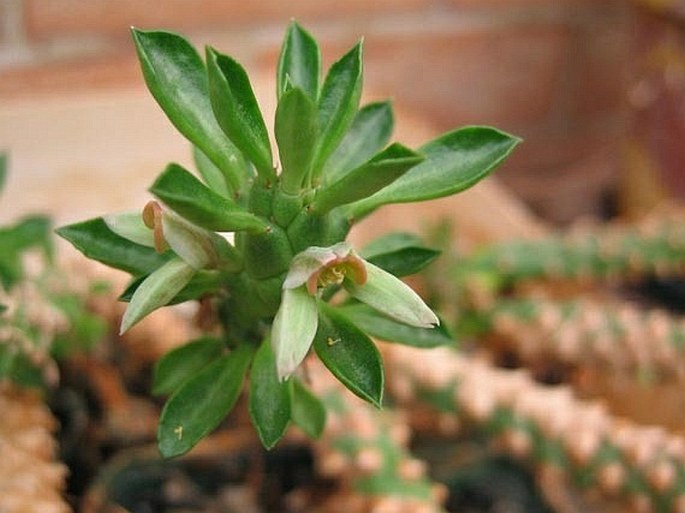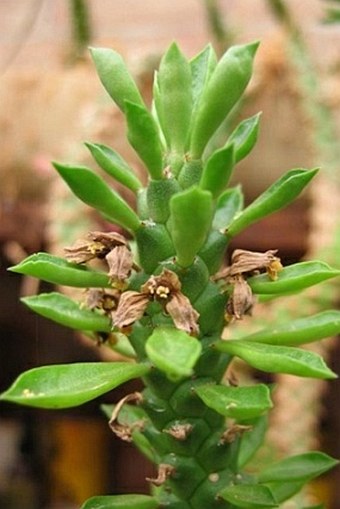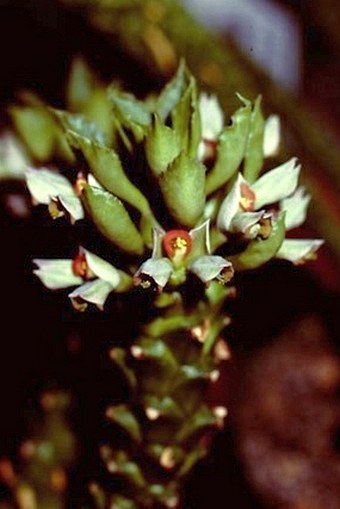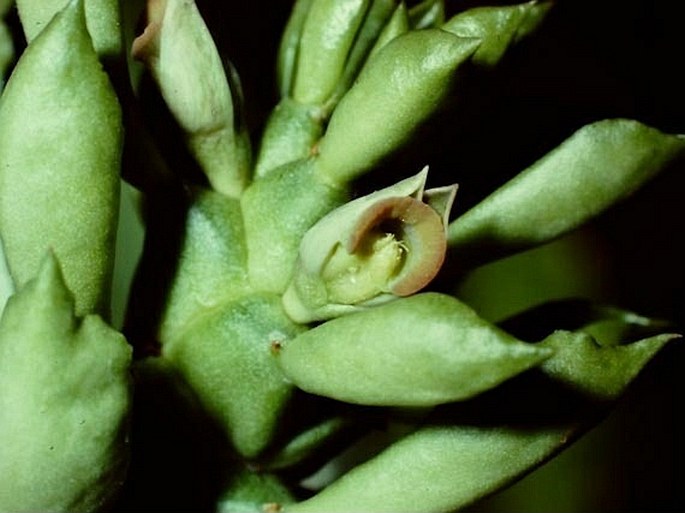Syn.: Euphorbia neostapelioides Bruyns, Monadenium stapelioides Pax, Monadenium succulentum Schweick.
Family: Euphorbiaceae Juss.

Distribution: Tanzania, Lake province; Kenya, Southern province, Northern Frontier province; Uganda, south of Mt. Moroto.
Ecology: In grass on rocky slopes, in dry areas, semi-desert.
Description: Perennial succulent spurge. Fleshy plant with tuberous rootstock, stems one to many, radiating from the rootstock, cylindrical, unbranched, green, 3 to 15 cm long, sometimes as long as 35 cm, at greater length they become decumbent, 1–1.75 cm thick, covered with hexagonal to rhomboid, spirally arranged tubercles, topped with a spineless leaf scar; leaves generally terminal, sessile, obovate, growing from the apex of the tubercles, tapering towards the base, 2–3 cm long, 1–1.75 cm wide, fleshy, glabrous green, lanceolate, acute, longitudinally folded, deciduous. Flower cymes crowded at the apex of the shoot, producing 3 involucres; peduncles 1–20 mm long, greenish white to white, flushed with pink; bract cup oblique with 2 short, rounded, apiculate lobes, 2-keeled with triangular notch, open in front, whitish green flushed with pink to dark pink; same with red or maroon involucral gland. Fruit is 3-lobed capsule with 2 toothed wings down each angle, 5 mm long and 6.5 mm wide.
Note: This species occurs also in the forma congestum with thicker stems, more numerous and smaller tubercles, very densely crowded leaves and subsessile cymes.



These images were taken in culture.


